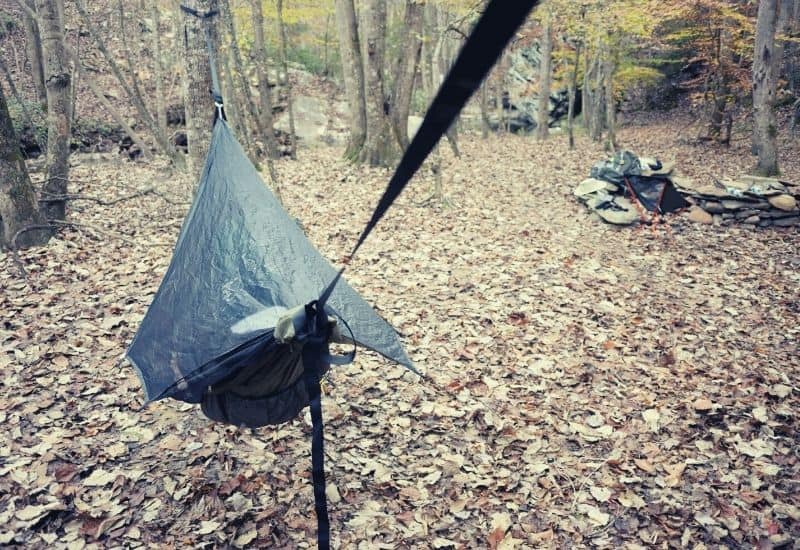Whether you intend to lie in your hammock for the afternoon or overnight, learning the correct way to set up hammock straps is essential. It only takes a bit of perseverance, a hammock, two trees, two suspension straps, and a little bit of know-how.
In this post, we’ll provide the last of these items with a simple, straight-talking guide.
Table of Contents
Do I Need to Buy Custom Hammock Straps?
Typically, hammocks come with a pair of hammock straps. While this can be convenient, often supplied straps are of inferior quality or aren’t suitable for your preferred hanging method.
Also, those included in hammock camping kits are often relatively short. Depending on how and where you plan on using your hammock, however, you might want a customized longer strap. Long straps come in handy in more sparse areas of forest and also increase the overall adjustability and versatility of your suspension system.
How to Use Hammock Straps: Step-by-Step Instructions
Step One: Choose Your Strap Type
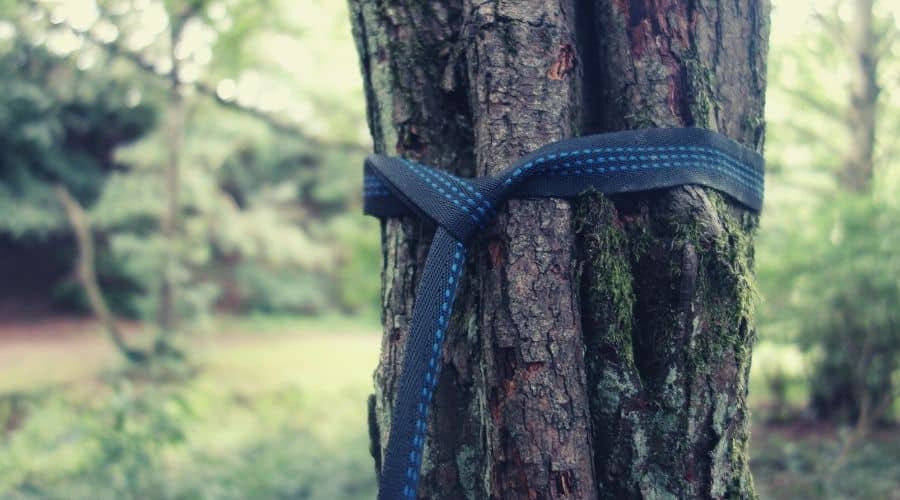
There are several types of hammock strap out there. Each one functions slightly differently:
Double Loop
Double-loop models are simple varieties that use loops on both ends: one for hitching to a tree, the other for attaching to a carabiner.
Daisy Chain or Easy-Tie
These additions to your hammock suspension system have webbing loops along the entire length of the strap. This design maximizes their adjustability and saves you from having to tie additional knots.
Eco-Friendly
“Eco-friendly” has become a bit of an umbrella term and is often used incorrectly. You need to validate it by checking out if the materials are entirely recycled. Otherwise, only the width makes straps eco-friendly or not. Narrow varieties dig into and damage trees, so those measuring 1” to 2” wide are the safest and most ethical choice.
Ratcheted
These tree straps use ratchets for easy tightening and adjustment. Though easy to use, however, they are typically much heavier than other options and, therefore, not the best for backpackers.
Loop-Free
As the name implies, these are simple strands of webbing of varying widths that require using your knot-tying skills for the creation of hanging loops. While cheaper and fully adjustable, we’d only recommend these if you’re handy with your knots.
Step Two: Source a Pair of Carabiners
Sometimes, when you buy a hammock, the manufacturer supplies both the straps and a set of carabiners. However, that is not always the case, and often the accompanying carabiners are not totally fit for purpose.
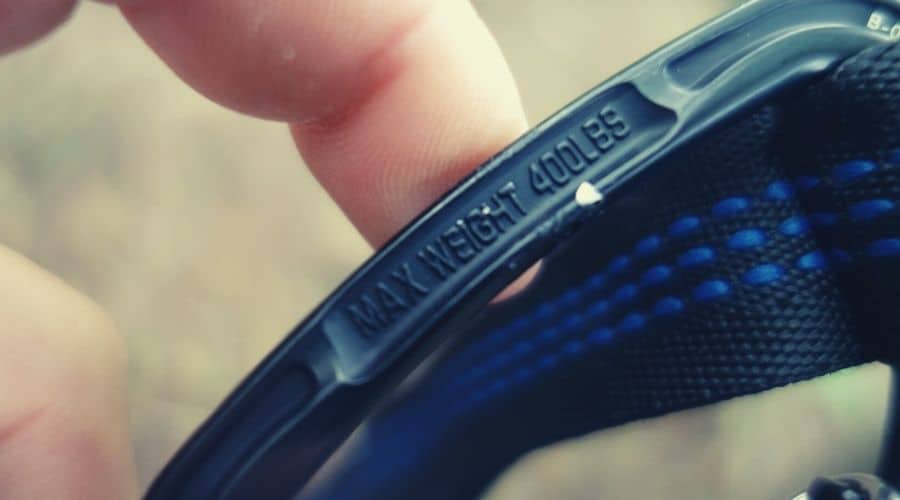
If you want to buy a set of ‘biners for your next hammocking adventure, here are some quick guidelines you should follow:
- They should be lightweight (less than 50 grams each), especially if you’re backpacking
- Non-locking carabiners will suffice
- Check the ‘biners’ strength rating is between 5kN and 10kN*
*The strength of a carabiner is measured in kilonewtons (kN). Each kN measures around 225 pounds. That means a 10kN-rated carabiner has a load rating of approximately 2,250 pounds.
You might be thinking that’s way more than necessary. However, dynamic movement increases the force on the ‘biner where you attach it to the rope, meaning you’ll need a strength rating that covers far more than your body weight alone.
Step Three: Choose Your Anchors
With each of these methods, you’ll need to find two trees strong enough to hang your hammock from and act as anchor points. Make sure these measure at least 6 inches in diameter at the point where you wrap your straps around them, i.e. about 6 feet from the ground. They should also be around 10-14 feet apart, depending on the length of your hammock and strap type.
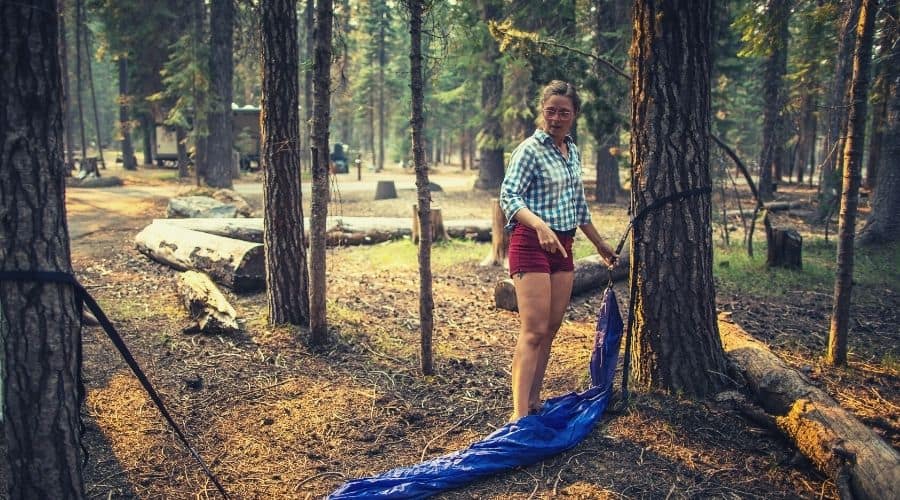
Step Four: Hang!
Different types of strap require slightly different hanging methods. Below, we cover the steps you should follow when setting up all three strap types.
Double Loop Method
- Take the first end of the strap and wrap around a tree, roughly 6 feet from the ground.
- Pass the end with the carabiner through the opposing loop.
- Tighten and clip the hammock to the carabiner.
- Repeat on the other side.
- Done!
RELATED: Check you’ve hung your hammock correctly with our Hammock Hang Calculator
Daisy Chain Method
- Wrap the strap around the tree.
- Pass one end through the opposing loop and pull tight around the tree.
- Attach the carabiner on the loop that will allow you to hang the hammock at the desired angle (roughly 30 degrees).
- Pass the rest of the strap through another loop to prevent it from flapping in the wind
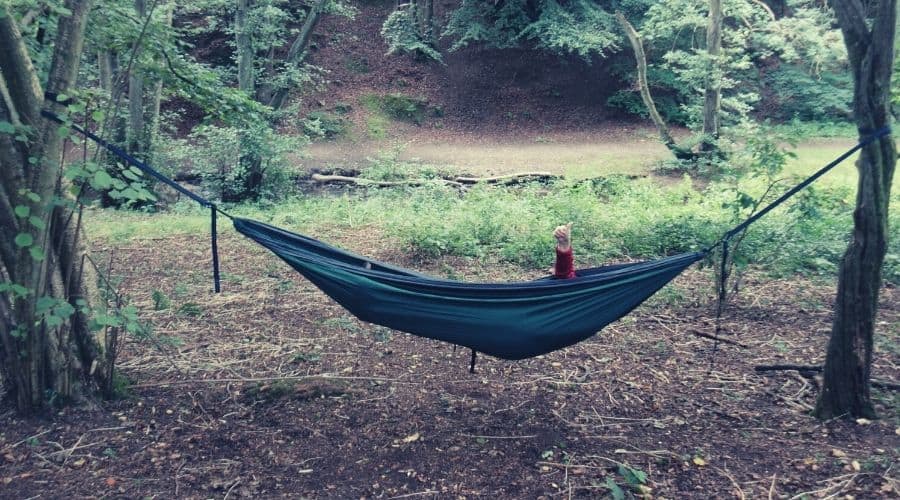
Loop-Free Method
Loop-free straps are slightly more complicated than the first two. There are many ways that you can use these straps, but the method cited below is one of the simpler versions if you are just starting out.
- Create a loop in one end of your strap with an overhand knot.
- Pass the loop around your first tree and feed the unknotted end through the loop.
- Pull tight around the tree.
- Tie a second overhand knot at the point in the strap where you want to attach it to the hammock with your ‘biner.
- Repeat on the other side.
Hang Tight With Well-Hung Straps
Didn’t we tell you it was easy?! With the above smarts, you’re now all set to get out there and hang hammocks safely wherever you please!
Did you find the tutorial as straightforward and informative as we promised? If you successfully learned how to hang hammock straps in this article, we’d love to hear about it! Comment or post your questions below to let us know what you thought!
